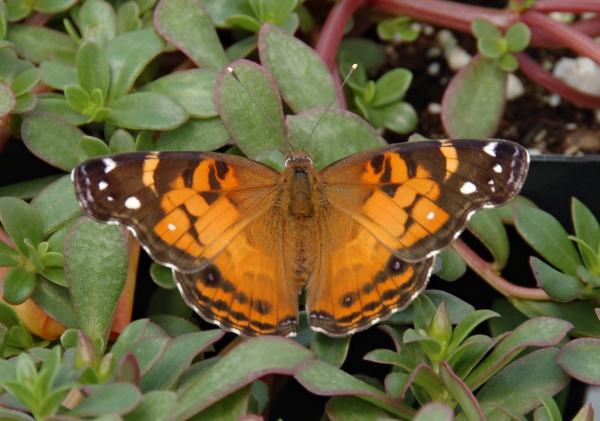Facts About American painted lady
The American painted lady, also known as the American lady (Vanessa virginiensis), is a striking butterfly commonly found throughout North America. Its caterpillars feed on a variety of plants from the Asteraceae family, such as cudweeds, pussytoes, and everlastings. In addition to North America, this butterfly can occasionally be seen in Madeira, the Canary Islands, and parts of southwestern Europe.
Vanessa virginiensis boasts distinctive features that make it easily recognizable. One prominent characteristic is the two large eyespots on the underside of its wings, distinguishing it from its relatives: V. cardui, which has four small eyespots, and V. annabella, which lacks any. Additionally, V. virginiensis exhibits a white dot in the forewing subapical field, which appears pink on the underside and often orange on the topside.
The color of the forewings' tips also helps differentiate these species. In V. cardui, the largest spot is white, whereas in the American painted lady, it is a pale orange, and in the West Coast species, it is simply orange. Moreover, the American painted lady displays a brighter orange hue on the topside of its wings compared to its counterparts.
Examine the row of black eyespots on the topside of the hindwing for another identifying feature. In the American painted lady, the eyespots at the ends of the row are typically larger and have blue centers. In V. annabella, the inner two spots may have blue centers, while in V. cardui, some eyespots might feature tiny blue centers in the summer, but generally, all the eyespots are of similar size and lack blue centers. The wingspan of the American painted lady is approximately 5 cm (around 2 inches).

 United States
United States